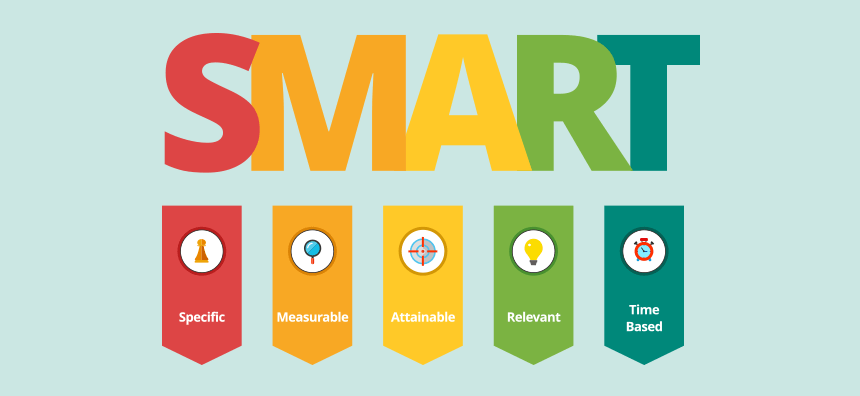
Click the button to start reading
An Effective Approach to Setting Business Development Goals
As we approach the end of the year, it’s a natural time to start reflecting on the past 12 months and planning for the future. For businesses and individuals alike, goal setting is an integral part of this process.
But there’s an art to goal setting. You can’t just make wild, ungrounded claims about your future success. When you’re looking to set business development goals, you can’t simply say “I want my startup to be a unicorn in 2 years”. Well, you can say that, but for 99.999% of new companies this “goal” is meaningless.
You want to be ambitious, sure, but your goals need to be achievable. More than that, you need to make sure you’re working towards the most relevant goals—the goals which will take the business where you (and your partners or shareholder) want it to go.
Let’s take a look at a well-rounded approach to setting business development goals which, if done right, can be transformative for your business.

Three things to remember before goal setting
Before we dive into applying the SMART method and actually creating your game-changing business development goals, we need to tackle some perceptions and misconceptions about goal setting. These are more subtle points which, in tandem with the SMART methodology, give your company the best possible chance of reaching and exceeding its goals.
#1—Remember your company vision and values
When your business starts going places (and especially when those places are up) it’s easy to get caught up in the moment. Your decision making can suffer, you can chase short-term gains (to the detriment of your long-term success) and essentially lose track of your true objectives.
The easiest way to combat this—and set goals which not only set you up for short-term success, but which also take your company a step closer to your grander vision—is to measure every goal against that vision or your company values.
For example, let’s say you started your marketing company to help the little guys (self-employed, cash-poor startups, minority entrepreneurs) and as you’ve grown your reputation, your skillset has caught the interest of some bigger companies. One offers you a big bucks cheque and you do a project for them. It’s a success, and you spot a lucrative market opportunity for yourself.
Before you embark on that, ask yourself: is this the right path for my business? If it is, great! But perhaps you’ll realize that the track you’re headed down doesn’t align with your long-term desires. This simple trick will help you hone and fine-tune your business over time, so that in the long run you don’t only have a business that’s profitable, but one you’re proud of, too.
#2—Failure is relative and goals aren’t everything
Too often we confuse “not meeting a goal” with “failing in our business”. When reviewing how well you’ve achieved your goals, you must remember it’s rarely a pass-or-fail scenario; it’s more like a success continuum.
If your company set a truly ambitious goal and put a number on it (say, “Hit $100k per month revenue by December, compared to $10k/month current average”) and only just fell short at $95k per month, then that is a massive success. Sure you missed your “target”, but you increased your monthly revenue by 9.5x and are probably still growing rapidly!
And this is the true purpose of goals: not to hit arbitrary numbers, but to facilitate growth and ambition and forward movement within the company.
Of course it’s possible to fail to hit your goal and be failing in business. If you haven’t put any effort into realizing your goals, you won’t reap any of the secondary benefits that come with that effort.
But for most companies that are proactively working towards ambitious goals, success isn’t guaranteed. What you might do is continuously grow, move forward, and succeed in a more general sense without ever reaching your goals! So don’t take “failure” on your goals too seriously—in the proper context, you might be doing exceptionally well.
#3—Invest in short, medium and long-term goals
When most of us talk about goals, we look far into the future. “I want to be a 7-figure business” or “I want to be the industry leader in our category”. These are fine ambitions, but they aren’t concrete goals your business can actually build towards.
So if your ambition is to be a 7-figure business, it’s essential to break down the long, medium and short-term goals that will get you there. The simplest way to approach this is creating long-term goals first, breaking these down into manageable chunks and then breaking those down into even more bite-sized chunks.
There you have it: 3 levels of goals which you and your teams can follow to reach distant, apparently insurmountable heights.

How to create effective business development goals—the SMART system
The SMART approach to goal setting gets a bit of flack, but it’s actually a very astute and reliable way to set ambitious yet achievable goals—goals which are actually relevant to the business. Because this approach requires more work than simply pinning vague ambitions on the wall, it also forces business owners to consider whether some goals are truly necessary.
(Hint: if it’s not worth the effort of spending a few minutes planning, then it’s probably not crucial to the business!)
The SMART system stands for:
- Specific
- Measurable
- Achievable
- Relevant
- Time bound

Specific
Specificity is crucial for creating a clear path and objective for your goal. For example, “Increase profits by 10%” is not particularly specific. Sure there’s a specific figure, but it doesn’t describe how this goal might be reached.
A specific example would be: “Increase profits by at least 10% by relocating to a cheaper warehouse (out of town) and putting more hours into search engine optimization for our website, to drive organic traffic and sales.”
An effective way to add specificity to goals is answering the 5 W’s:
- Who is involved in this goal?
- What is the desired final outcome?
- Where is this goal to be achieved?
- When do we want to achieve this goal?
- Why is this goal important?
Measurable
“What is measured is improved.” These famous words have been proven true time and again over the years. If you don’t assign some metric for success to your goals, how will you know if you’ve succeeded, or to what degree? How will you assess what did or didn’t work en route to this goal?
Measurability is absolutely essential. In the above example, it’s pretty straightforward: compare next year’s profits to the previous year. This could be broken down into monthly or quarterly analyses to track progress.

Achievable
The point with this step is just to ground your ambition. It’s typical for business owners to shoot for the stars with their goals, but if this leads to an endless slog of missed targets, it can be demoralizing for both business owners and the team. Worse, it can force employees to put in massive efforts, increasing their risk of burnout or churn.
So for every goal, we need to consider if it’s realistically achievable by using our best judgement. This is best done by comparing historic efforts. For example, if you made a heavy loss in the previous year, shooting for huge profits is probably unrealistic. However, if you’ve been building for a few years and reaping the rewards, continued stretch growth is a fantastic goal.
Relevant
This step is essentially saying, “Is this goal truly valuable and can it be achieved under current circumstances?”
Let’s take our goal of increasing profits. If your company is currently going through a supply chain crisis, or is struggling to service customer support requests, is growing profits the best goal to be setting your business right now? Or should you be seeking to address other core aspects of the business first?
A few questions you could ask yourself include:
- Does this goal align with our grander business goals and vision?
- Is this the right time for this goal?
- Am I the right person to lead this effort?
- Are there economic factors which make this less desirable?

Time-bound
A natural part of any goal-setting system is assigning a firm time cap. Goals without deadlines are just vague ideas of what your business can do; putting a hard time limit on your goals is a key driver and motivator to making it happen.
As we highlighted above, it can be useful to break longer-term goals into smaller chunks. For example if you have a 3-year plan, set up bi-annual or quarterly reviews of progress. Not only does this allow you to re-evaluate your goals (which is incredibly important) it can motivate the workforce by seeing their progress to date.
We all know what it’s like to have goals which aren’t time-bound—they just don’t work.
Conclusion
Goal setting for business development is unique to every company. Your current situation, your values and your ambitions will never fully align with what others have done. That’s why this post focuses very little on sharing specific goals from other companies: for education, it’s the process of creating highly effective goals that’s most important, not the goals themselves.
We have peppered small examples throughout to illustrate points, but the truly fun part of goal setting is examining your business and figuring out where you want to take it. Having this vision is fundamental to goal setting: without knowing where you want to go—even in general terms—how can you possibly set relevant and effective goals?
It’s important to review your goals periodically. Business development is an iterative process: your company’s identity, your personal vision and external factors always evolve over time.
So use this guide to get started on uncovering your key business development goals and objectives. And further down the line, use it again to check if your current path is still the right one for your business.
















